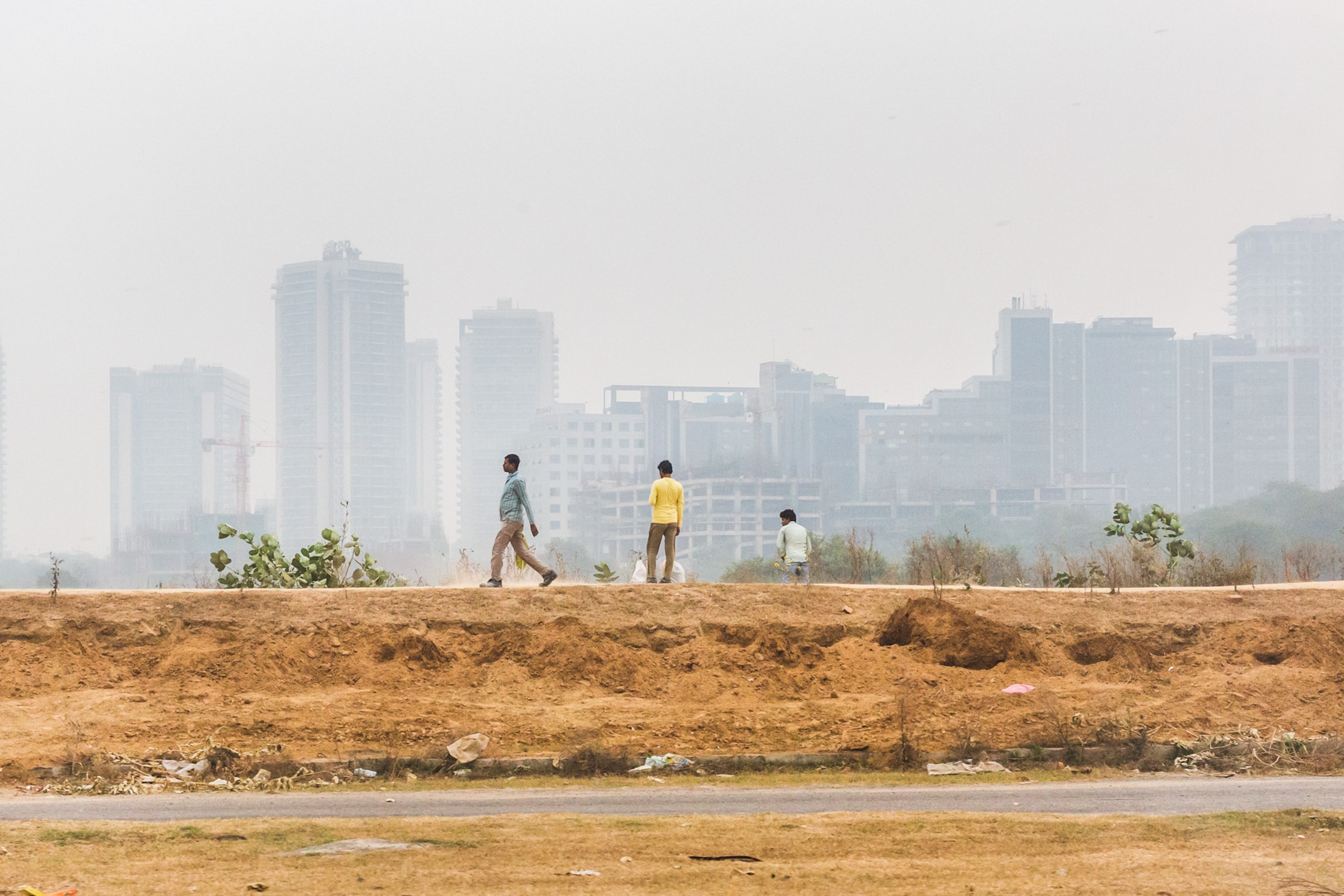In 2016, a 25,000 square meter area in Rethymno, a city on the northern coast of the Greek island of Crete, registered a reduction in the mean maximum air temperature of 1.69°C, an improvement of user thermal comfort of approximately 46%, a reduction of air pollution levels, and a decrease in energy consumption of nearby buildings. These achievements were the result of a pilot project aimed at the implementation of bioclimatic designs, including the use of compressed soils, cool pavers, and photo-catalytic road paint in public spaces and streets.
The energy department of the Madrid Institute for Advanced Studies, Spain, was designed to combat rising temperatures and water scarcity, utilizing the principles of bioclimatic architecture to maintain comfortable indoor temperatures while minimizing energy consumption. Water-saving systems were implemented, with rainwater collected from the roof used for irrigation and other purposes.
In Germany, many cities are addressing environmental challenges such as rainwater management, temperature regulation, air quality improvement, and public well-being through the adoption of Nature-Based Solutions (NBS) like green roofs and facades. Municipalities have been instrumental in promoting green infrastructure and by 2019, about two-thirds of them made green roofs mandatory, with cities like Munich, Stuttgart, and Berlin enforcing policies for new buildings. Targeted funding programs and subsidies have been introduced, with some cities offering up to 60% coverage of installation costs.
Urban adaptation is the driving force behind these different initiatives, highlighted as case studies in the recently published European Environment Agency’s Urban Adaptation in Europe report. Drawing attention to the pivotal role cities play – and their potential – in shielding citizens from climate change impacts, the report underscores the urgency of implementing adaptation measures. It showcases the diverse range of actions undertaken by European cities to address climate risks, and emphasizes the effectiveness of strategies such as urban planning, early-warning systems, and nature-based solutions.
However, the report also underscores the necessity of sustained political commitment, adequate funding, and citizen engagement for successful adaptation efforts. It advocates for actions across all sectors and governance levels, emphasizing the importance of establishing tangible targets to gauge progress.
The report builds on the results of various assessments at the European level, including the European Climate Risk Assessment (EUCRA) report published in March by the European Environment Agency (EEA), which highlighted the insufficient alignment of current policies and adaptation actions with the escalating climate risks, particularly impacting densely-populated urban areas with heatwaves, floods, and extreme precipitation. The EUCRA underscored the critical challenges posed, emphasizing the imperative for proactive measures to ensure Europe’s resilience in the face of climate change, serving as a call to action for a climate-resilient Europe.
European adaptation planning is on the rise
European policies increasingly recognize the importance of supporting sub-national adaptation to climate change, with cities playing a crucial role in implementation, and are evolving accordingly.
As summarized in the EEA Urban Report, for example, the 2021 EU adaptation strategy, alongside the European Climate Law’s binding climate neutrality target for 2050, provides a legal framework for resilience efforts. These directives are supported by increased funding sources and new implementation mechanisms, such as the 2022 Mission on Adaptation.

Adaptation planning is on the rise, with over half of European cities now having dedicated plans. The European Green Deal emphasizes the importance of ensuring equity in adaptation efforts, addressing inequalities in vulnerability to climate change impacts.
“Moreover, member states are developing and updating their own strategies and plans to address climate hazards and impacts specific to their countries needs, recognizing the diverse challenges across Europe,” says CMCC researcher Katie Johnson, who contributed to the conceptualizing and writing of the report. “This multi-level governance approach allows adaptation efforts to be tailored to national contexts. Regional, sectoral, and municipal plans further complement these efforts by targeting adaptation where impacts are most felt, demonstrating the importance of coordinated action at all levels to address climate change.”
CMCC is working with the EEA as a part of ETC/CA (the European Topic Centre on Climate change adaptation and LULUCF), a consortium of 18 European organizations with expertise in adaptation and land use. Some of the data on European adaptation and case studies originates from the Climate-ADAPT platform, maintained by the EEA with the support of the ETC/CA.
The EEA Urban Adaptation report identifies five clusters of adaptation actions aimed at enhancing resilience to climate instability and fostering thriving cities for people, nature, and the economy. These actions target mitigating climate-related hazards by minimizing exposure, reducing vulnerability, or enhancing adaptive capacity.
Sharing architectural solutions for climate resilience
The report provides an overview of available options and showcases European and international examples, analyzing what the most effective adaptation measures are based on different contexts. These key measures include governance, economic and financial strategies, physical and technological innovations, nature-based solutions, and knowledge and behavioral changes, offering a comprehensive framework for monitoring adaptation progress.
In particular, the report shows how physical measures for adaptation have evolved beyond traditional infrastructure like dykes and seawalls to include innovative materials and designs, influenced by regulations and technology advancements. These measures, applied in water, energy, and mobility systems, prioritize efficiency and resource reduction.
An emerging trend involves integrating green elements with gray infrastructure, maximizing benefits and flexibility. The report includes a wealth of examples of many types of adaptation solutions in architecture and design of public spaces, such as the case studies of Rethymno and the Madrid Institute for Advanced Studies.
“All these examples of adaptation could be inspiring for other municipalities that are facing similar climate impacts,” says Johnson. “For example, cities can find interesting new ideas for solutions that have worked for others and could work for them too.”
The report also highlights emerging opportunities for implementing adaptation actions in urban areas, focusing on urban agriculture, placemaking, and cultural heritage. Despite adaptation not being the primary motivation for these activities, their increasing interest, research, funding, and participation offer potential avenues for integrating adaptation and resilience considerations more extensively.
Placemaking, for example, involves communities collaborating to transform public spaces, emphasizing active participation and ownership in design and space. It goes beyond urban design to incorporate the creation of local identities and preservation of cultural heritage, with people at its center.
On the steps of placemaking, the New European Bauhaus (NEB) initiative champions sustainability, aesthetics, and inclusiveness, concentrating on both buildings and infrastructure to fulfill its objectives. This philosophy directly aligns with the original Bauhaus movement’s vision, which aimed to craft urban environments and structures that were not just visually appealing but also functional and accessible to everyone, enhancing people’s quality of life.
An “interdisciplinary initiative connecting the European Green Deal to living spaces and experiences with the goal to make Europe climate-neutral by 2050,” the NEB extends its vision from building to living spaces and the built environment, recognizing the importance of aesthetic qualities for well-being and community identity. As reported by the EEA, with a significant investment of EUR 450 million for the 2021-2027 period, the NEB offers opportunities to integrate placemaking principles into design processes, enhancing climate change resilience.
“With this report, we aimed to illustrate the multitude of ongoing initiatives and the myriad of small-scale efforts taking place,” says Johnson. “However, we also tried to raise the question: Why isn’t there more action being taken? While acknowledging the strides made, it’s essential to recognize that there remains ample space and opportunity for further progress.”
The EEA report identifies key enabling factors for effective climate adaptation. These include sustained political commitment, good governance, sharing of best practices, citizen engagement, effective use of knowledge and data, and sustained funding. These factors are crucial for streamlining and upscaling adaptation efforts, ensuring that actions are implemented efficiently and with long-term impact.
“A future challenge could be delving deeper into the lack of indicators to track adaptation progress, an area we aimed to explore further,” says Johnson. “It’s important to have a way to measure and monitor adaptation efforts to understand what’s working and make informed decisions for the future. Having more information, especially for local policy-makers and municipalities, is crucial to ensure that investments yield the desired outcomes.”
Read more:






